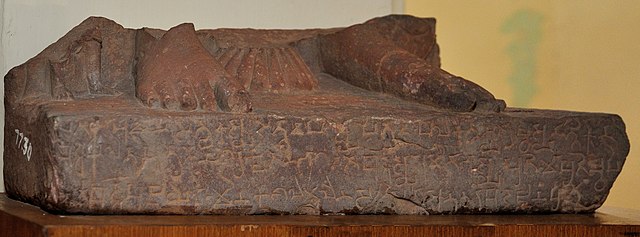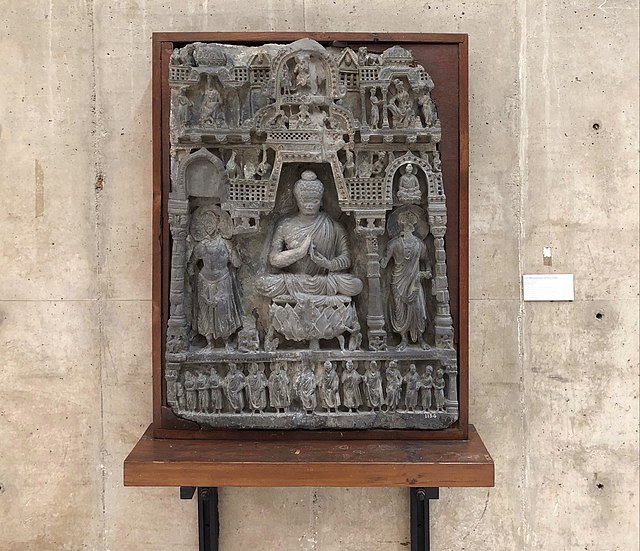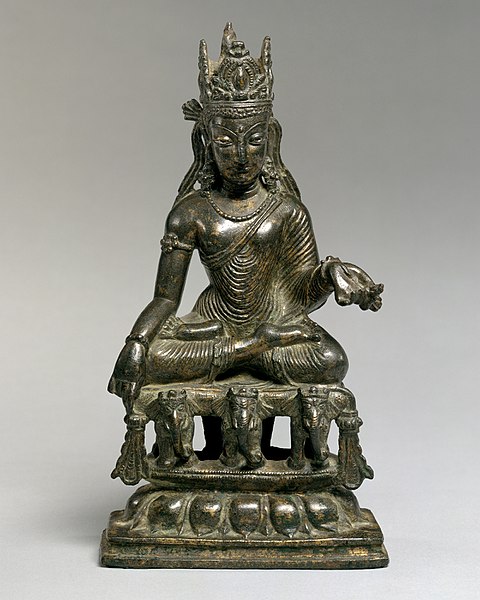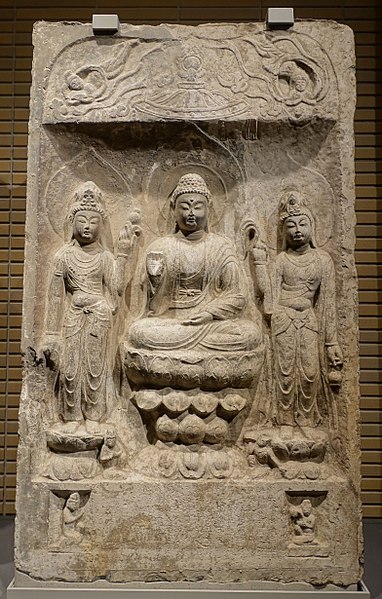Nianfo
Videos
Page
The Nianfo, alternatively in Japanese as 念仏 , Korean: 염불; RR: yeombul, or in Vietnamese: niệm Phật, is a Buddhist practice central to the tradition of Pure Land Buddhism, though not exclusive to it. In the context of Pure Land practice, it typically refers to the repetition of the name of Amitābha in a ritualized form, though in some contexts it can refer instead to a more meditative practice. It is a translation of Sanskrit buddhānusmṛti.

Japanese monk Kūya reciting the nembutsu, each of the Chinese characters represented by a small figure of Amida emerging from his mouth

The six Chinese characters of the Nembutsu, resting on a lotus, flanked by Sakyamuni and Amitabha

Mushono-Dainembutsu amulet paper

A reprint of nembutsu (nianfo) calligraphy composed by Honen, founder of Pure Land Buddhism in Japan. Printed in a Jodo Shu liturgy book.
Pure Land Buddhism
Videos
Page
Pure Land Buddhism or Pure Land School is a broad branch of Mahayana Buddhism focused on achieving rebirth in a Pure Land. It is one of the most widely practiced traditions of Buddhism in East Asia.

Inscribed pedestal with the first known occurrence of the name of Amitabha Buddha (c. 153 CE). The Brahmi inscription states "Bu-ddha-sya A-mi-tā-bha-sya"; "Of the Buddha Amitabha."

Gandharan sculpture of Amitabha in Sukhavati, 2nd century CE, from Khyber Pakhtunkhwa, Pakistan.

Bronze sculpture of Aksobhya Buddha, Pakistan (Northwest Frontier Province, Swat Valley), 9th century

Amitabha triad in a niche, Baoqingsi temple, Xi'an, Shaanxi province, China, Tang dynasty, dated 703 CE.